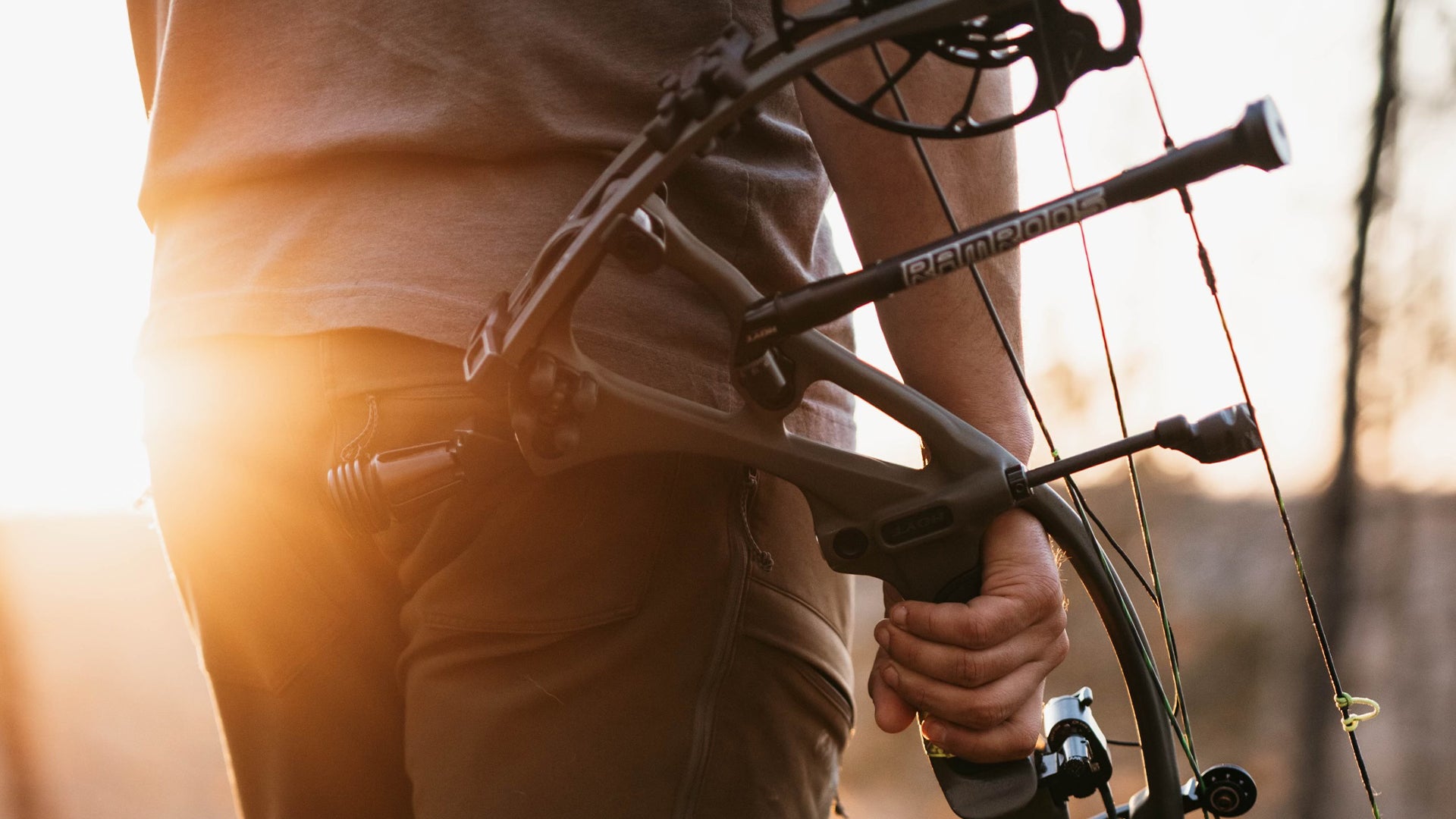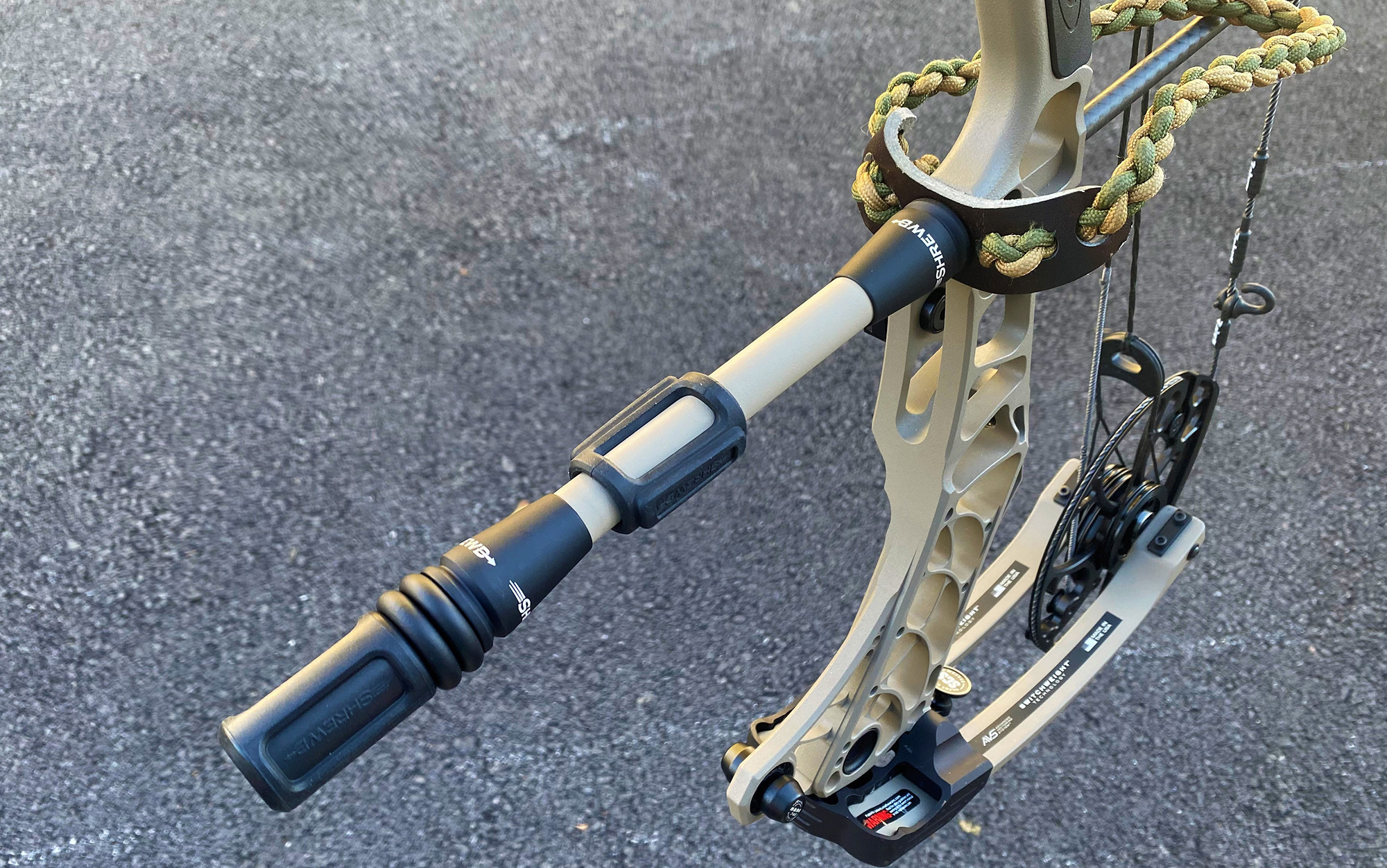Attain Consistent Shots with the Right Bow Stabilizer: Shop Our Choice Today!
Attain Consistent Shots with the Right Bow Stabilizer: Shop Our Choice Today!
Blog Article
Boost Your Archery Performance: The Ultimate Guide to Bow Stabilizer Setup
Enhancing your archery efficiency calls for a meticulous approach to every facet of your tools configuration. Among the various elements that add to accuracy and stability, the bow stabilizer plays a pivotal role in refining your shot implementation. Understanding just how to maximize your bow stabilizer configuration can result in considerable enhancements in your general accuracy and consistency on the variety or in the field. As we explore the intricacies of picking the right stabilizer weight, positioning, and fine-tuning strategies, you will certainly uncover the trick to unlocking your complete capacity as an archer.
Comprehending Bow Stabilizers
In the realm of archery tools, the function and function of bow stabilizers stand as vital components for improving shooting accuracy and security. Bow stabilizers are developed to minimize bow torque, lower resonances, and assist in holding the bow stable during the aiming and launch process. By affixing a bow stabilizer to the riser of the bow, archers can experience better balance and minimized hand shock, leading to even more specific and regular shots.
The main purpose of a bow stabilizer is to dampen any resonances that take place upon launching the arrow. This reduction in vibration not just improves the shooter's comfort however additionally aids preserve focus and control throughout the shot cycle. In addition, bow stabilizers help in reversing the weight of accessories attached to the bow, such as views, quivers, and arrowhead relaxes, guaranteeing optimal weight circulation for boosted stability.
Understanding the mechanics and benefits of bow stabilizers is vital for archers aiming to tweak their shooting efficiency and accomplish better accuracy on the variety or in the field.

Selecting the Right Stabilizer Weight
Picking the proper weight for your bow stabilizer is a crucial element of enhancing your archery arrangement for enhanced capturing performance. The stabilizer weight directly influences exactly how efficiently the stabilizer minimizes resonance and maintains your bow during the shot. When choosing the appropriate stabilizer weight, it's important to consider your shooting style, bow equilibrium, and personal choices.
Lighter stabilizers, commonly considering between 3-6 ounces, are preferred by archers that prioritize maneuverability and fast target procurement. These stabilizers are optimal for hunters or those who shoot in difficult terrains where movement is crucial. On the various other hand, heavier stabilizers, ranging from 8-12 ounces or more, are liked by target archers seeking maximum security and reduced bow movement. The added weight helps hold the bow steadier throughout the aiming procedure and reduces the results of torque on the bow.
Inevitably, the best stabilizer weight for you will depend on your shooting goals and choices. Trying out various weights and locating the one that offers the optimum equilibrium of security and ability to move is key to improving your archery efficiency.
Putting Up Your Bow Stabilizer
To appropriately install your bow stabilizer, make sure that you have all the required devices and adhere to these detailed guidelines for a reliable and protected arrangement. Begin by identifying the front stabilizer bushing on your bow riser.
Meticulously thread the stabilizer into the front bushing by hand, ensuring not to cross-thread it (bow stabilizer). When the stabilizer is snugly in place, use an appropriate wrench to tighten it securely. Prevent over-tightening, as this can cause damage to the bow or stabilizer
After setting up the stabilizer, check to ensure it is straight and aligned with the bow. Some stabilizers feature adjustable weights or dampeners; change these according to your choices and shooting design. Test the bow to make sure the stabilizer is successfully lowering resonance and improving your shot visit this site right here consistency.
Readjusting Stabilizer Setting for Precision
After mounting the bow stabilizer safely, optimizing its position is vital for enhancing accuracy in your shooting. The position of the stabilizer can dramatically affect the equilibrium and stability of your bow throughout the shot cycle. To adjust the stabilizer for optimal accuracy, start find out here now by explore different placements. Moving the stabilizer better to the riser can help in reducing the bow's general weight distribution, possibly enhancing your aiming security. On the other hand, expanding the stabilizer even more out can enhance the bow's forgiveness and reduce the effects of torque on the shot.
When adjusting the stabilizer position, consider the kind of capturing you do. For target archery, a longer stabilizer positioned better out might be advantageous for included stability during the intending process. On the various other hand, hunters might prefer a shorter stabilizer for better maneuverability in the field. Remember to make tiny changes and examine your arrangement after each modification to figure out the ideal position for your capturing design and preferences.
Fine-Tuning Your Stabilizer Configuration

In addition, consider the positioning of any type of dampeners or weights along the stabilizer rod. Moving these elements closer to or even more from the riser can modify the stabilizer's overall impact on your bow's balance. Fine-tuning these information can help in reducing resonance, minimize hand shock, and enhance general control throughout the shot execution.
Regularly reassess your stabilizer setup as your shooting technique evolves to ensure it continues to complement your form and shooting objectives. By finetuning your stabilizer setup with accuracy and treatment, you can optimize your bow's efficiency and raise your archery skills to brand-new heights.
Conclusion
Finally, maximizing your bow stabilizer configuration is crucial for boosting your archery performance. By recognizing the function my latest blog post of stabilizers, choosing the ideal weight, properly placing the stabilizer and mounting, and adjust its arrangement, you can boost your precision and consistency in capturing. Put in the time to explore various setups and adjustments to find the configuration that works ideal for you and assists you accomplish your archery goals.
Bow stabilizers are developed to minimize bow torque, minimize vibrations, and assist in holding the bow consistent throughout the aiming and launch procedure. By affixing a bow stabilizer to the riser of the bow, archers can experience improved equilibrium and decreased hand shock, resulting in more regular and specific shots.

The stabilizer weight straight influences exactly how effectively the stabilizer decreases vibration and stabilizes your bow during the shot. bow stabilizer. By comprehending the purpose of stabilizers, choosing the suitable weight, correctly mounting and placing the stabilizer, and tweak its setup, you can enhance your accuracy and consistency in capturing
Report this page